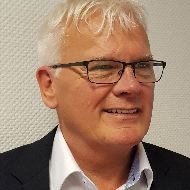- About Aginode
- Data Networks
- Telecom Infrastruktur
- Produkte
-
Ressourcen
- Ressourcen
- Documentation
- Blog
-
Case Studies
- Übersicht
- Innoasis development in Norway
- Eemsdelta Campus
- Hotelschool The Hague
- Emergency covid hospital, Hong Kong
- Société du Grand Paris
- Centrin Datacentres
- Airbus
- Athens Historic City Hall
- Pinewood Studios
- Goethe University Frankfurt
- Denmark New University Hospital
- University of Toulouse
- CHM Maubeuge: a model for future-ready hospitals
- Webinars
- Software Tools
- Warranty
- Newsroom
- Suchen
- Kontaktieren Sie uns
- Vergleichen
- Anmelden
Healthcare
What can we learn from ‘super hospitals’?


How consolidation is increasing reliance on IT and network technology – and how FTTO can help
Taking on healthcare challenges
Medical facilities everywhere are facing similar challenges: budget constraints, shortages of staff, inconsistent availability of highly specific expertise, ageing populations and more chronic diseases. One approach to dealing with these challenges is convergence. By bringing facilities together, it becomes possible to reduces duplication of services, centralize expertise and resources, and improve integration of care. Further benefits include scalability, efficiency and supply chain and cost management. However, this type of consolidation is also introducing new demands on ways of working, hospital and campus design, and IT infrastructure.
Increasing reliance on IT
‘Super hospitals’ resulting from extensive consolidation are appearing all around the world, from Hungary and the United Kingdom to China. Research by US healthcare data firm Definitive Healthcare names consolidation as the most signifcant healthcare trend of 2019.[1] As consolidation increases, there is a significant increase of primary care treatment by, for example, GPs, as the hospital becomes increasingly focused on providing specialised care. Definitive Healthcare’s study also indicated that technology and IT driven trends – notably Artificial Intelligence and Telehealth will be increasingly important in the near future.
Let’s take a closer look at an example of a super hospital project, and its implications for IT and communications networks. Denmark had 98 hospitals in 1999, but only 32 today. A €9.3 billion healthcare reform plan aims to develop 16 large, specialised hospitals, which will provide the foundation of the country’s hospital structure. These will rely strongly on innovative healthcare IT. The first project to be completed is Det Nye Universitetshospital (New University Hospital, DNU) Aarhus, part of the hospital plan for 1.2 million citizens in the Central Denmark Region. DNU is the largest hospital project in the history of Denmark, as large as a typical Danish provincial town.
The hospital has been designed to meet the future demands of technology, treatment and ways of working. A wide range of state-of-the-art IT innovations have been designed to make DNU significantly more efficient and cost-effective. To accommodate these service and applications, fibre optic cables are required at every single outlet across the vast campus. This involves some 80,000 fibres and a vast number of terminations. The new network opens up all sorts of new possibilities, such as vast data storage, transfer and analysis, or support for patient monitoring and high definition cameras. Off-site medical consultants can advise or oversee medical procedures, operations or diagnostics. Patient services in the area of entertainment and communications can also be converged onto a single system. Physical and electronic signage and apps guide visitors to the right location in the shortest possible time. Each patient has access to a personal monitor to find information about treatment procedures, training, menus, entertainment and more. For the hospital, all this means more ease and efficiency at a lower cost.
[1] https://blog.definitivehc.com/news/healthcare-trends-survey-2019
Getting ready for next-generation healthcare
Fibre To The Office (FTTO) is ideal for huge campus environments, such as super hospitals. FTTO combines passive fibre cabling and active switches to provide Gigabit Ethernet services from a central core switch to an FTTO switch and from they’re to end user devices. FTTO eliminates the need for floor distributors, separate fibre backbone, active equipment, patch panels and racks, as well as large volumes of horizontal copper cabling. A significant advantage in an environment where every square meter counts and space for patients is most valuable. The excellent performance and simplicity of the concept brings savings by reducing complexity, and enabling faster and easier rollout, maintenance and expansion. The scalability of the system allows you to expand as you grow, ensuring expenditure is always perfectly in line with current requirements.
Kategorien
Unsere Websites
Wählen Sie Ihr Land aus, um unsere Produkte und Lösungen zu finden
-
Africa
- Africa
- Ghana
- Ivory Coast
- Morocco
- North West Africa
- Americas
- Asia
- Europe
- Oceania
